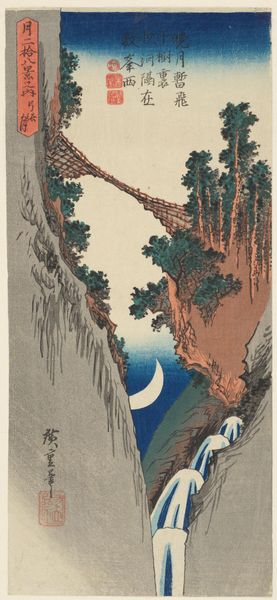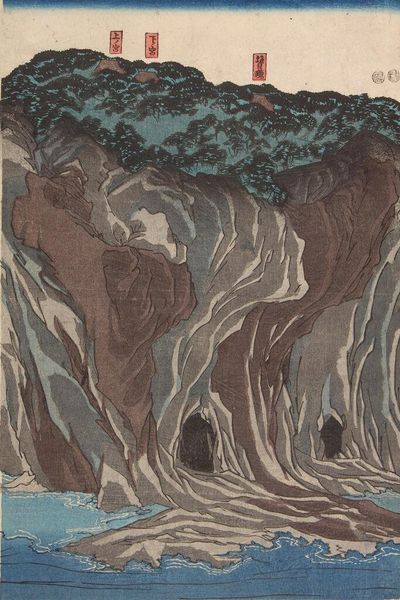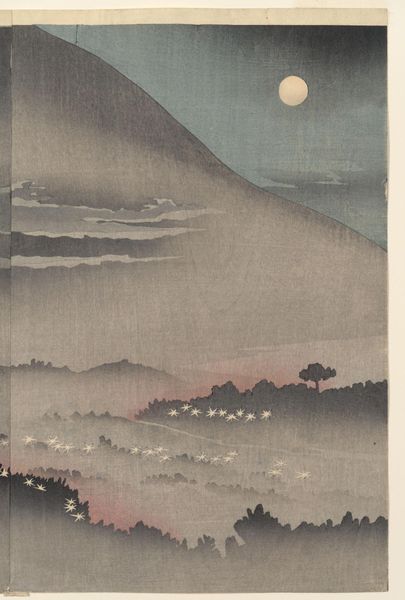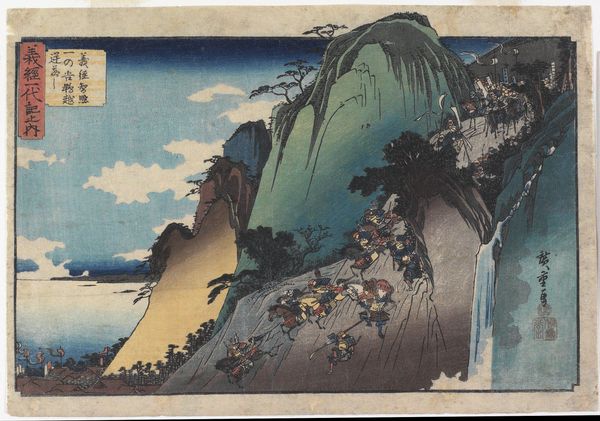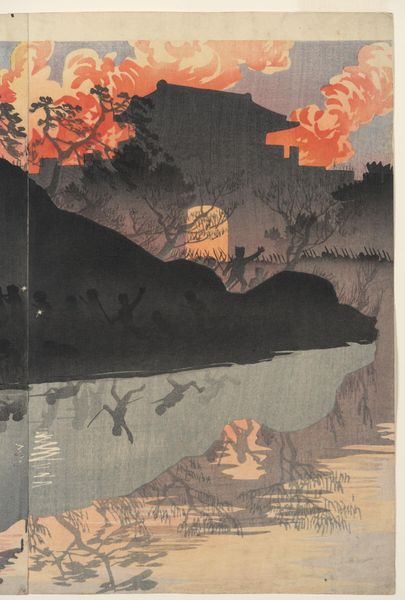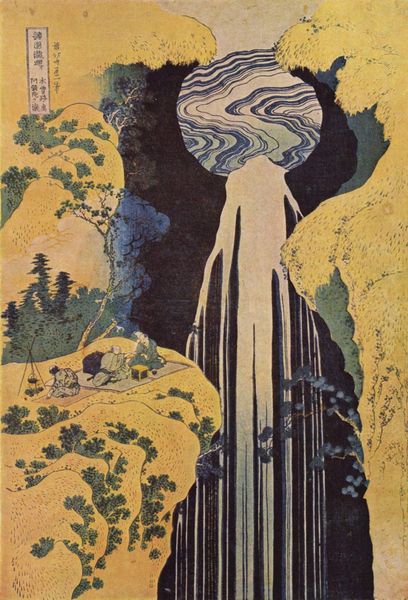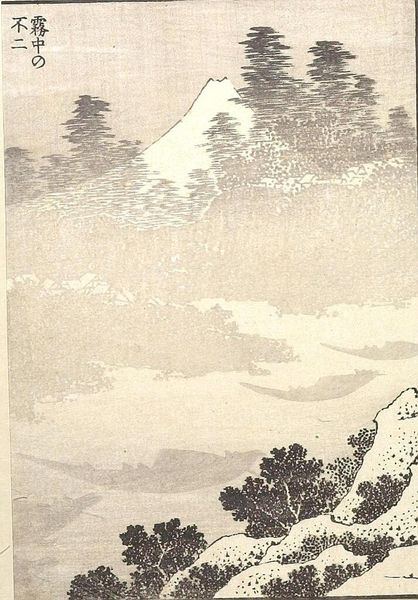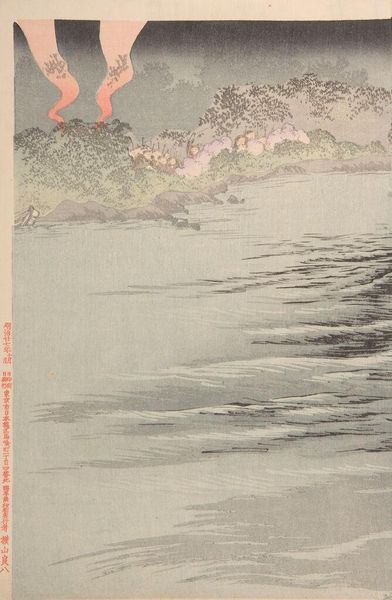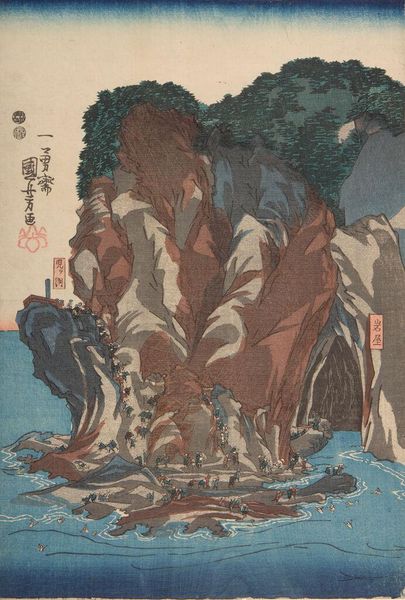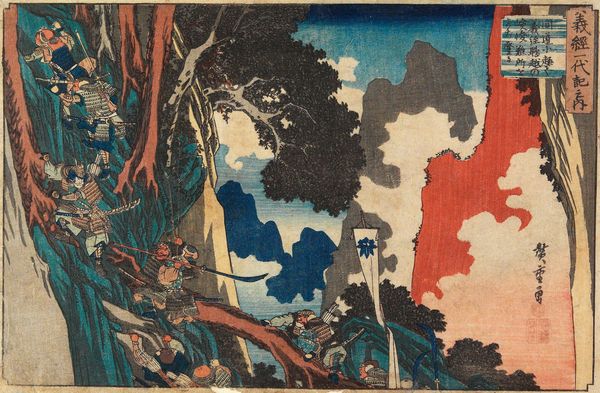
print, woodblock-print
#
tree
# print
#
impressionism
#
asian-art
#
landscape
#
ukiyo-e
#
forest
#
woodblock-print
#
geometric
#
orientalism
#
water
#
painting painterly
#
line
Copyright: Public domain
Editor: This is “A bridge across a deep gorge,” a woodblock print by Utagawa Hiroshige. It depicts a narrow chasm, spanned by a precarious-looking bridge. There's something incredibly theatrical about it; the landscape is presented almost like a stage set. What's your interpretation of this dramatic composition? Curator: What immediately strikes me is how this work fits within the tradition of *ukiyo-e*, pictures of the floating world. These prints were not merely decorative; they played a significant role in shaping public perceptions of landscapes and travel. Consider the social context: Increased urbanization in Edo created a longing for nature and escape. Hiroshige and others fulfilled this desire by making famous scenic spots accessible to all. The bridge here, almost comically fragile, isn’t just about physical connection, but also speaks to a broader cultural connection to these idealized spaces. Editor: So it's about accessibility, both literally and metaphorically? Curator: Precisely. These prints circulated widely, effectively democratizing access to nature. They also served a political purpose, subtly promoting the stability and beauty of the Tokugawa shogunate's domain. How do you think this influenced its reception by audiences at the time, and today? Editor: That makes sense. It’s fascinating how a seemingly simple landscape print can be layered with so much social and political meaning. The fragility of the bridge contrasting with the permanence of nature, maybe it's a commentary on human ambition versus the power of the natural world. Curator: Exactly. We need to analyze visual culture to grasp socio-political values of Edo period, to truly see all it tells us. Editor: That’s given me so much to think about when considering other works too, thinking about the role art can play!
Comments
No comments
Be the first to comment and join the conversation on the ultimate creative platform.
